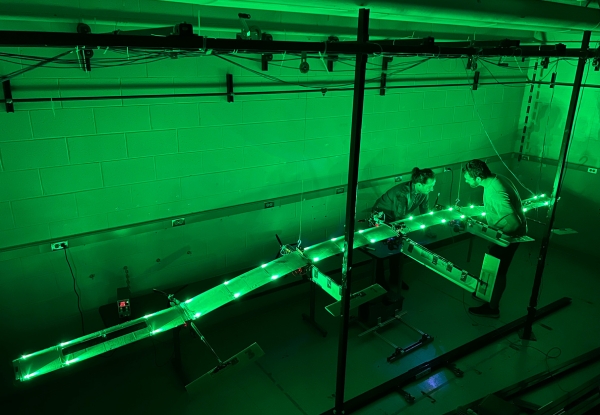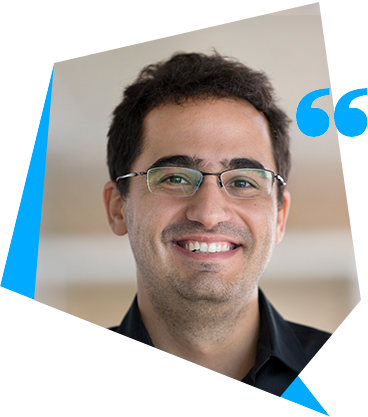< retour aux articles
Leandro Lustosa and the HALION project
Publié le
Leandro Lustosa, Associate Professor at ISAE-SUPAERO, spent 2 months at the University of Michigan in the USA, with the support of the Foundation. He returns to the University where he has been appointed posdoctoral researcher, as visiting professor, to continue his work on the HALION project.

How did this project come about?
Before joining ISAE-SUPAERO as an Associate Professor in 2020, I had an appointment as a Postdoctoral Fellow working for the Airbus-Michigan Aeroservoelasticity Center at the University of Michigan. During this period, I developed the theory behind a novel technology, the HALION Project, that allows very flexible aircraft autopilots to estimate wing deformation in real time for stabilization and safety purposes. Ultimately, this technology is a fundamental building block in my long-term objective: designing very light and high-aspect ratio (thus aerodynamically efficient) aircraft capable of structural shape control during flight. In addition, further application of this technology could be used for flapping wing drones and bird-like flight.
What was the aim of this research trip ?
Leandro Lustosa

After setting up my research program at ISAE-SUPAERO, the IONLAB Program, in which the HALION Project plays a central role, I returned as a Visiting Professor to the University of Michigan through the support of the ISAE-SUPAERO Foundation to establish a life-long collaboration with his cherished mentor, Prof. Cesnik, currently director of the Active Aeroelasticity and Structures Research Laboratory (A2SRL), head of the Aerospace Engineering Department, and inventor of X-HALE very flexible aircraft testbed, which is currently flying in the USA, Brazil and, soon, at ISAE-SUPAERO. After being validated in theory and simulation and through flexible wing mock-ups in ISAE-SUPAERO’s motion capture room, the time has come for flying this new technology! ISAE-SUPAERO and the University of Michigan are joining forces to provide real-time shape control of wings by installing the HALION technology in the X-HALE testbed.
What’s next for this project ?
2024 will be marked by the implementation and construction of the ISAE-SUPAERO’s X-HALE Iron Bird, a non-flyable mock-up of the entire aircraft with the final HALION avionics systems for electronics integration validation. After validation, the ISAE-SUPAERO’s X-HALE/HALION Aircraft is scheduled to begin flights in 2025 through the help of Ph.D. candidates and researchers from both institutes and with flight tests happening simultaneously in the USA, Brazil, and France.
Any final word ?
Thank you so much for your support! It has been fundamental to the success of my academic project.